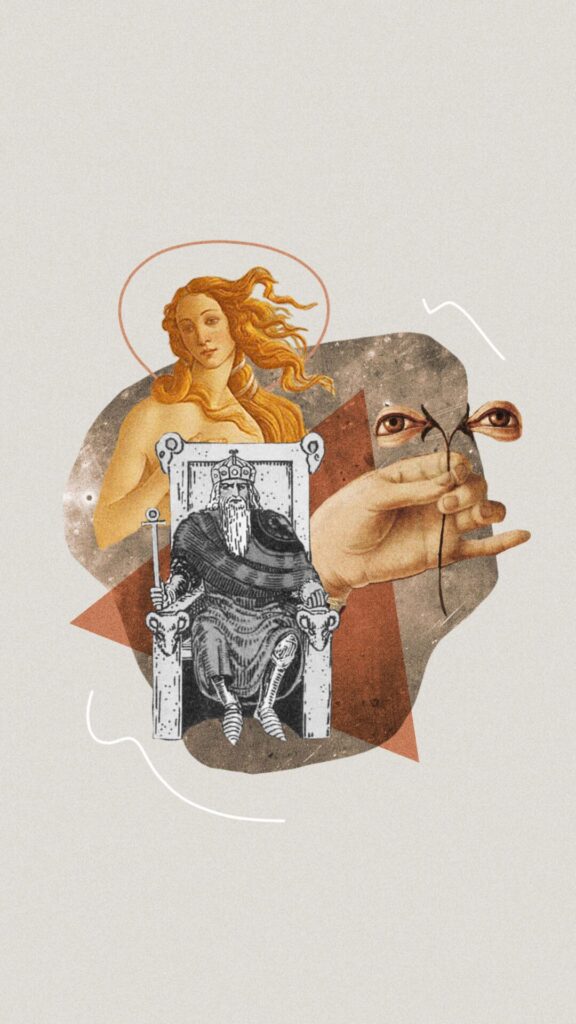Archetypes in branding reflect the personality and narrative of a brand. They can be used as a valuable tool for businesses to relate to their audience— helping to inform efficient marketing efforts and effective advertising campaigns. By aligning a brand to an archetype, companies are able to individualize themselves, as well as offer significant and sustainable differentiation from their competitors.
For creative work, brand archetypes can function as a compass, guiding visual design, strategy development, and brand positioning to give value to a company.By tapping into the brand archetype system, businesses not only are able to develop powerful magnetic brands, but also illuminate internal development across all facets of the organization.

Stories and their characters
The brilliant Swiss psychologist Carl Jung developed the idea of archetypes to be a tool in psychiatry in the early 20th century. These universal symbols and patterns were used to help understand people better: what drives them, what their attitude is on life, behaviors, desires, and what may hold them back.
“It is sufficient to know that there is not a single important idea or view that does not possess historical antecedents. Ultimately they are all founded on primordial archetypal forms whose concreteness dates from a time when consciousness did not think, but only perceived.”
– Carl Jung
Archetypes as a concept have existed as long as storytelling has existed. They exist embedded in literature, across different cultures, and recurring throughout history. By personifying motifs and categorizing them, archetypes can help the mind create shortcuts to quickly understand a person, character, or brand.
Giving meaning value
Jung’s work on archetypes and symbolism was further developed by Dr. Carol Pearson and Margaret Mark, who together created a framework to build businesses, marketing, and brands around principles of psychology. In their book, “The Hero and the Outlaw,” Pearson and Mark explore a brand’s meaning and how it resonates in the hearts and minds of the public.
“Marketing without a system for managing meaning is analogous to ancient navigators trying to find port in treacherous seas on a starless night.”
– Margaret Mark and Carol S. Pearson, The Hero and The Outlaw
Understanding brand archetypes
A brand archetype gives a brand a human identity and personality, setting it apart from other brands like it. The personality traits associated with each archetype is easily understood— timeless and recognizable. Knowing the archetype of your brand can help you make more consistent business and design decisions, leading to more trust and engagement from your customers.

There are plenty of toolkits around brand archetypes, with the most common being the classic 12-archetype model: The Innocent, Explorer, Sage, Magician, Outlaw, Hero, Lover, Everyman, Jester, Ruler, Creator, and Caregiver. An understanding of these archetypes has become invaluable knowledge for bringing meaning and profit to a brand.
“Overall, because branding is about creating and sustaining trust, it means delivering on promises. The best and most successful brands are completely coherent. Every aspect of what they do and what they are reinforces everything else.”
– Wally Olins, Branding consultant
Some companies have become so wildly successful and iconic, they have become archetypal in themselves. These brand monoliths have inspired people and businesses alike: tech companies that want to be the next Uber, creation of products as innovative and charming as Apple, or becoming as dominant in eCommerce as Amazon.
Standing out, while coming together
In the past companies faced less competition, but soon enough the internet, globalization, and new innovative technologies made that competition fierce and demanding. Even if you could create a successful advantage over others, a competitor could quickly copy it. It’s simply not enough to have solid product with great features — you also must appeal to a deeper meaning tied to your company’s mission, promise, and values. Companies nowadays aren’t only being bought for what they sell, but for the culture they’ve created.
“The new breed of consumer is not as trusting, as loyal, or as malleable as those of the past.”
– Margaret Mark and Carol S. Pearson, The Hero and The Outlaw
Consumers care more than ever about a brand’s values, and how they act on them. Being authentic and consistent strengthens the valuable connections with your audience. That’s where brand archetypes come in— leveraging archetypal meanings to find the soul of a company and how that’s expressed inwardly and out.
Being able to connect brands to people in a human way is vital in staying relevant and visible in an intense and complex marketplace. A brand’s story does much more than inform marketing, visual identity, messaging, and communications within a company. Knowing which archetypes an organization aligns with can help with sales pitches, competitive analysis within similar brands, and forming long term goals and vision.
Is your organization looking to refresh or refine their brand? Reach out to us to learn more about how we can help align your company’s brand and how it’s expressed to the world.
Commence has helped communicate brands across a broad amount of industries and mediums at every step of the way. Take a look at some of our projects, and how we’ve helped our clients with their brands.
